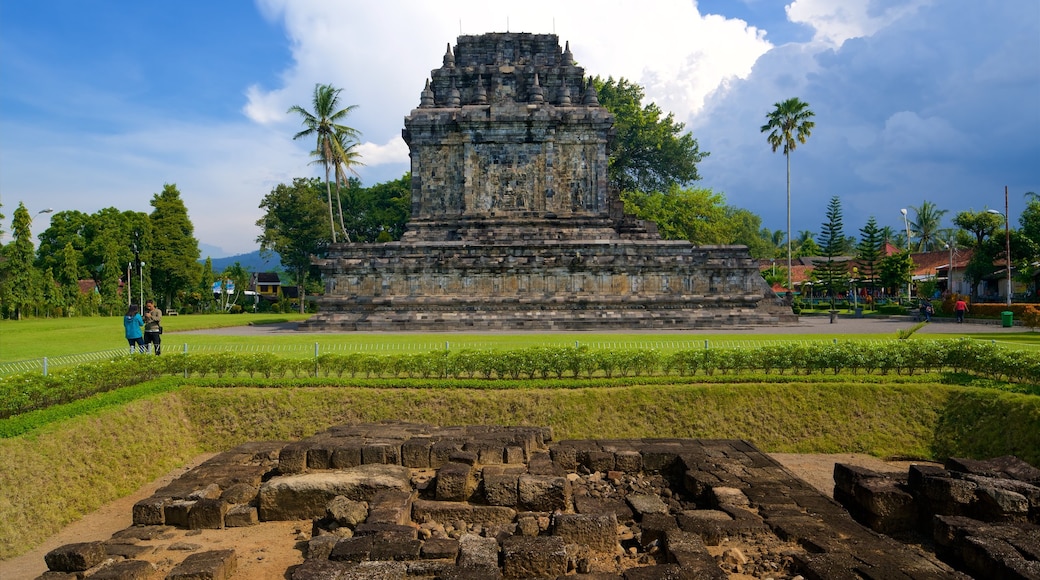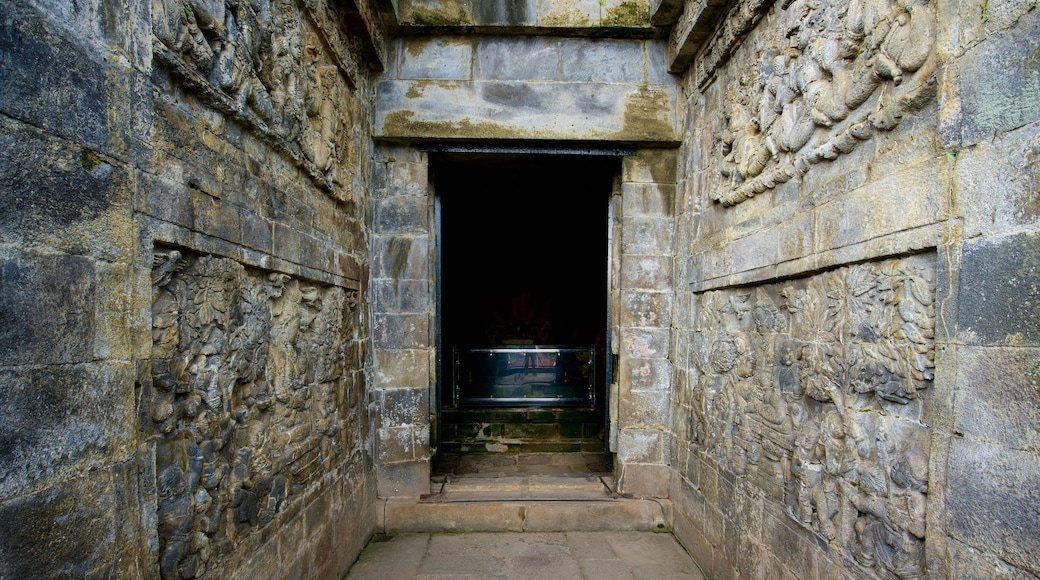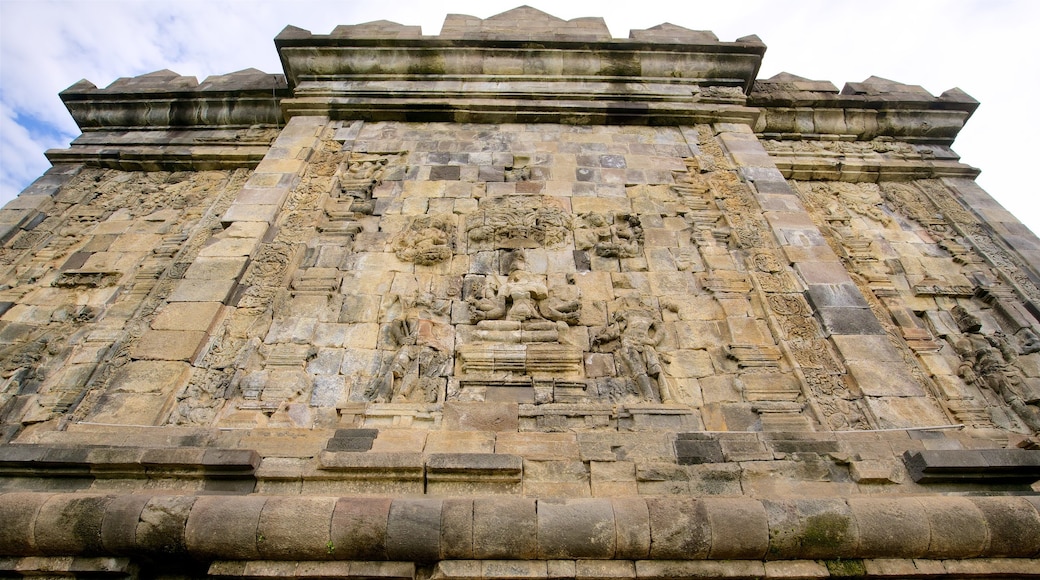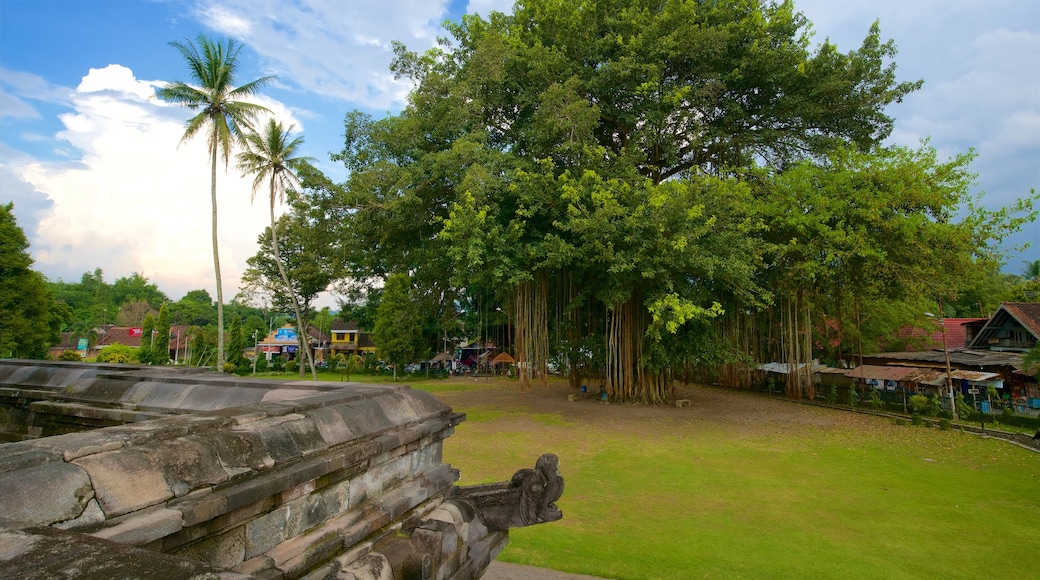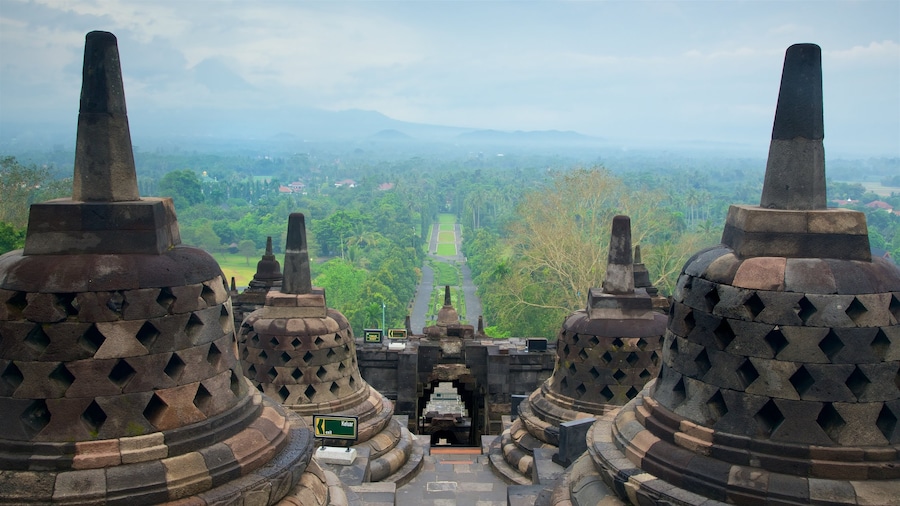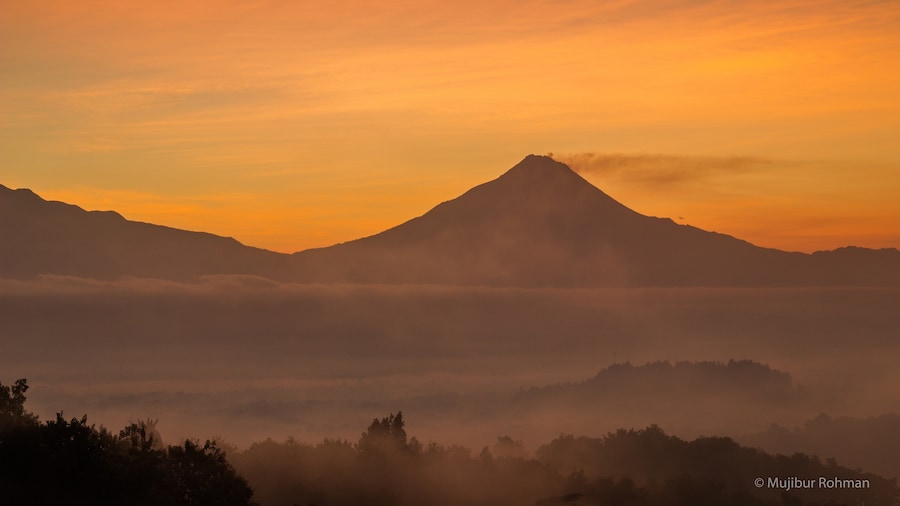Venture inside Candi Mendut, an ancient Buddhist temple that dates back to the early ninth century. Although this sacred place of worship fell into disrepair over the centuries, it was rediscovered as a vegetation-concealed ruin in 1836, and restored. Today, it is once again used for religious ceremonies.
Walk up the stairs to the entrance and go inside for a look at the three large and well-preserved statues.
The central, main figure is approximately 10-feet (3-meters) tall and depicts Gautama Buddha holding his hands in a gesture known as a Dharmachakra mudra. This represents an important moment in the life of the founder of Buddhism, when he preached his first sermon after his Enlightenment. Study the statues on either side of the Buddha. They are of two divinities known as Bodhisattvas.
Devote some time to investigating the temple's other features. They include a bas-relief on one of the internal walls of Hariti surrounded by children. She is a revered fertility goddess who childless couples pray to. There is also a relief of Kubera, the chief of evil spirits who eventually became the Lord of Wealth.
Browse the many beautiful reliefs and carvings that decorate the exterior walls and staircase. They illustrate a variety of Buddhist tales, including animal fables. Even after the passage of more than 1,000 years the carved images can clearly be seen.
This ancient temple is located in the village of Mendut, about 1.8 miles (3 kilometers) east of the Borobudur Temple and 0.6 miles (1 kilometer) east of Pawon Temple. All three temples are positioned in a straight line relative to each other. Candi Mendut is open daily and charges a fee for admission. Next door is the Mendut Buddhist Monastery. Wander through its grounds and watch or take part in group meditations and ritual chanting.
